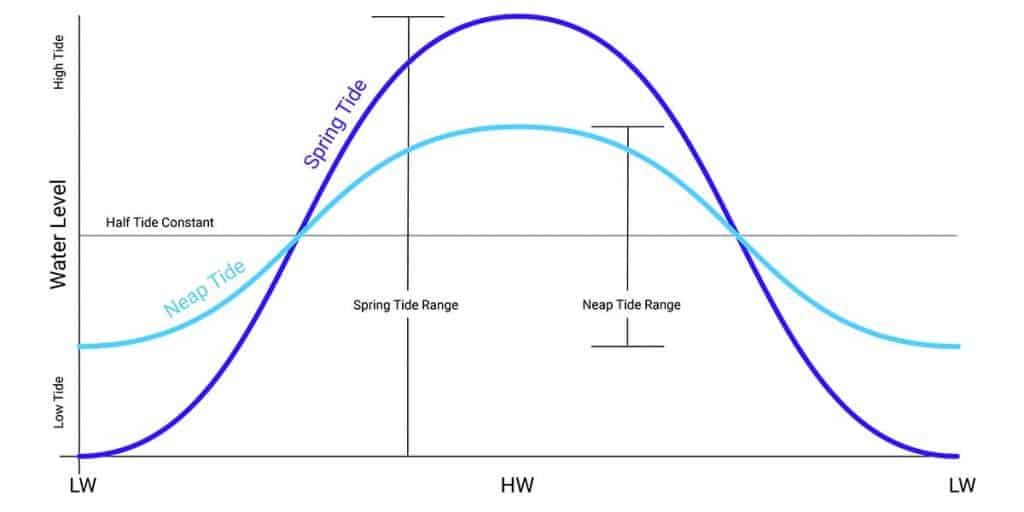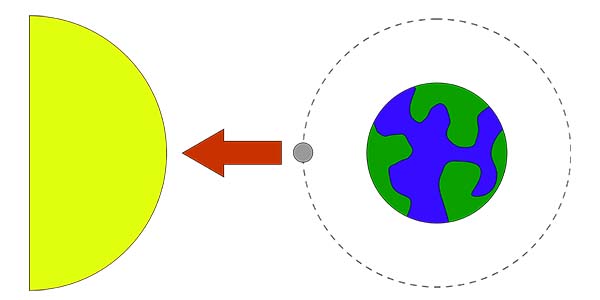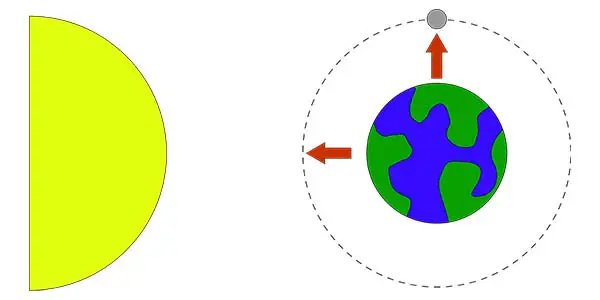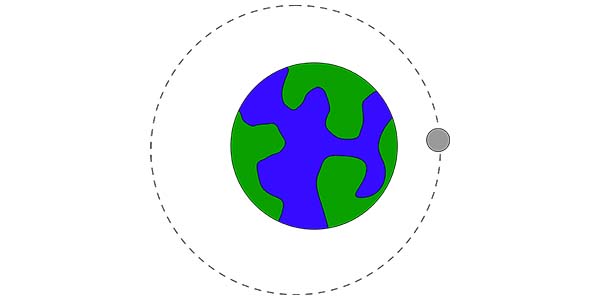What Is The Difference Between Spring & Neap Tide?
When it comes to tides, there are two extremes that we need to know about: Spring Tides, and Neap Tides.
Spring Tides are when a tide experiences its greatest range (the height difference between high water and low water), and occur approximately once every two weeks. Neap tides are when a tide experiences its smallest tidal range, occurring approximately one week on either side of a spring tide.
A common way of remembering it is that spring tides are when the tide “springs forward”, making the high water higher than usual.
Spring tides have the highest highs and the lowest lows, while neap tides have the lowest highs and the highest lows.

In the image above, you can see a typical tidal illustration of a standard sine-wave tidal pattern.
During a spring tide, the high water reaches the highest point of the entire tidal cycle, and the low water reaches the lowest point.
The difference between the highest high tide and the lowest low tide gives us the greatest tidal range of the entire cycle.
During a neap tide, you can see that the height of the tide at high water is much lower than it was during the spring tide.
Similarly, the neap tide low water does not drop as low as it does during the spring tide low water.
The difference between high water and low water during neap tides gives us the lowest tidal range across the entire tidal cycle.
Spring tides and neap tides occur due to the moon’s monthly orbit around the earth.
Approximately twice per month, the earth, moon and sun are in a line and their gravity all pulls in a similar direction.
When the oceans feel a gravitational pull in a similar direction, the increased force results in the more extreme tidal ranges observed during spring tides.
Conversely, when the earth, moon and sun are perpendicular to each other, the ocean feels a more balanced force, resulting in the less dramatic tidal ranges that happen during neap tides.
While spring tides and neap tides are important to understand, they are only two of the tides that are important for boaters to know. I cover all the different tides in my article: XX Types of Tide: Explained By A Real Ship’s Officer.
What causes spring tides?
Spring tides are caused when the sun’s gravity and the moon’s gravity act in a similar direction, increasing the tidal force felt by the earth’s oceans. The increased force results in high tides that are higher than usual, and low tides that are lower than usual.

The diagram above illustrates a new moon when the moon and the sun’s gravity are both pulling in the same direction.
Similarly, during the full moon, when the moon is on the opposite side of the earth to the sun, their gravity also acts to increase the tidal force felt by the earth’s oceans.
The increased tidal force acts across the entire body of the world’s oceans, pulling them in the same direction with the greatest possible force.
It drags the water higher up against landmasses, which we then observe as high waters that are higher than usual.
What causes neap tides?
Neap tides are caused when the sun’s gravity and the moon’s gravity act in opposite directions, averaging out the tidal force felt by the earth’s oceans. The lower, averaged force results in high tides that are lower than usual, and low tides that are higher than usual.

The diagram above illustrates a quarter moon when the moon and the sun’s gravity are acting at right angles to each other, resulting in a more averaged force.
Similarly, during the other quarter, when the moon is on the opposite side of the earth to the diagram, their gravity also acts to average the tidal force felt by the earth’s oceans.
You can think of it like the sun is trying to pull on the tide at low water, making low water a bit higher.
As the volume of water does not change, making low waters a bit higher also makes high waters a bit lower.
When do spring tides and neap tides occur?
Spring tides occur approximately once every two weeks, during the full moon and the new moon.
Neap tides also occur approximately once every two weeks, between spring tides, when the moon is in its first quarter or its last quarter.
The frequency of spring and neap tides is controlled predominantly by the moon’s orbit around the earth.
According to NASA, the moon takes 27.3 days to orbit the earth, so you would think that the spring tide and neap tide cycle would repeat every 27.3 days.
It’s a little more complicated than that though.
Spring tides and neap tides are actually controlled by the alignment of the moon and the sun, so we also need to consider the change in position of the earth-moon system in its orbit around the sun.
When the moon completes its orbit around the earth, it needs to continue a little further to return to its alignment with the sun relative to the earth.
This means that the spring tide and neap tide cycle occurs approximately once every 29.5 days, giving us just over 7 days between a spring tide and the following neap tide.
Perigean spring tides
While spring tides are understood to be the highest high tides and the lowest low tides, they do not always give the same highest high tide every cycle.
A couple of times per year, we get an exceptionally high spring tide, known as a perigean tide, or a king tide.
This happens when the perigee of the moon’s orbit aligns with the sun-earth-moon alignment that causes the spring tides.

The moon does not follow a perfectly circular orbit around the earth. Sometimes it passes closer to the earth, and sometimes it is further away.
The closest point it comes to the earth throughout its orbit is known as the perigee.
When the moon is at its perigee, its gravitational effect on the world’s oceans is felt most strongly.
A couple of times each year, the moon’s perigee occurs during the full moon or the new moon, aligning it with the same alignment that causes spring tides.
The overall force felt from the sun and the perigean moon’s gravity is greater than the usual force felt during a regular spring tide.
This exceptional force results in a spring tide that is higher than usual, earning it the name “king tide”.
How do spring and neap tides affect boats?
Spring tides and neap tides affect boats in two major ways: the depth of water available; and the currents experienced.
We’ll only focus on spring and neap tides now, but if you are interested in a more general interpretation of how tides affect boats, check out this article: How Do Tides Affect Boats?
Most obviously, when the high tide is higher than usual, there is more water available under the keel of your boat, so it is easier to navigate in shallow areas.
More dangerously, however, during low water of a spring tide, the tide will be at its extreme lowest.
You need to keep a careful eye on the depth in channels when navigating during a spring tide.
What if you run aground?
Running aground during a spring tide can present a unique set of problems.
Should it be high water during a spring tide, you will need to wait for at least two weeks for the water to return to the same level so that you can float free.
Should you run aground at high water during a perigean spring tide, it could be months before the water reaches the same level again.
What does it mean if you are neaped?
When a vessel has a draft that requires a particular height of tide to float, there is a risk that it could become neaped.
Essentially, if a vessel needs a height of tide that is greater than the neap high water, there will be a number of tides throughout a normal tidal cycle that it cannot float.
The vessel would either need to reduce its draft by discharging some cargo or wait until the spring tides come around to have enough water to float.
Similarly, when a vessel runs aground at high water on a spring tide, it will be neaped at least until the following spring tide.
How do currents change during spring and neap tides?
During spring tides, a greater volume of water moves than at neap tides.
In exposed areas, where the rise in water comes directly from an oceanic body, there will be minimal change in currents between spring tides and neap tides.
In areas where the tide is constrained in some way, either by geographic features or man-made dock systems, the currents will change.
During spring tides, you can expect to experience stronger currents than you do during neap tides.
A greater volume of water is trying to move through the same size opening during the same time period, so the only variable that can change is the speed of the water flow.
The speed of moving water is felt by boats as a current.
What about slack water?
From a tidal diagram, you can see slack water as the periods when the tidal curve is the flattest.

In the above diagram, you can see that you would experience a greater period of slack water during a neap tide than you would during a spring tide.
I have covered slack water in depth in another article, so it is worth checking that out if you are interested: When Is Slack Tide?
Percentage springs
Now that we have a complete understanding of the difference between spring and neap tides, it is important to be able to identify where on the spring cycle you are.
To do that, you use a concept called “percentage springs”.
The percentage spring compares a given tidal range to the tidal range expected during a spring tide.
For example:
Spring tidal range: 2m
Neap tidal range: 1m
Tidal range on this tide: 1.5m
You first calculate the difference between the spring tidal range and the neap tidal range, to get a spring-neap range.
2m – 1m = 1m spring-neap range
Then you work out how far along the spring-neap range you are on your given tide by first subtracting the neap tidal range from your given tidal range.
1.5m – 1m = 0.5m
You then create a ratio of your distance along the spring-neap range, compared to the total spring-neap range.
0.5m / 1m = 50% springs
In our example, we know that it is 50% springs, so we can use that when it comes to navigation.
Where do you use percentage springs?
The most common place to use percentage spring calculations is in a tidal atlas.
Tidal atlases tell you the current at spring tide and the current at neap tide.
Using your percentage spring calculation, you can work out how much current you can expect on your particular tide.
For example:
Spring rate: 2kn
Neap rate: 1kn
Percentage spring: 50%
Expected current: 1.5kn
Further reading
Spring and neap tides are just one part of the much larger topic of tides in general.
If you are wanting to learn more, I recommend you next read my article about all the different types of tide: 20 Types of Tide: Explained By A Real Ship’s Officer.
